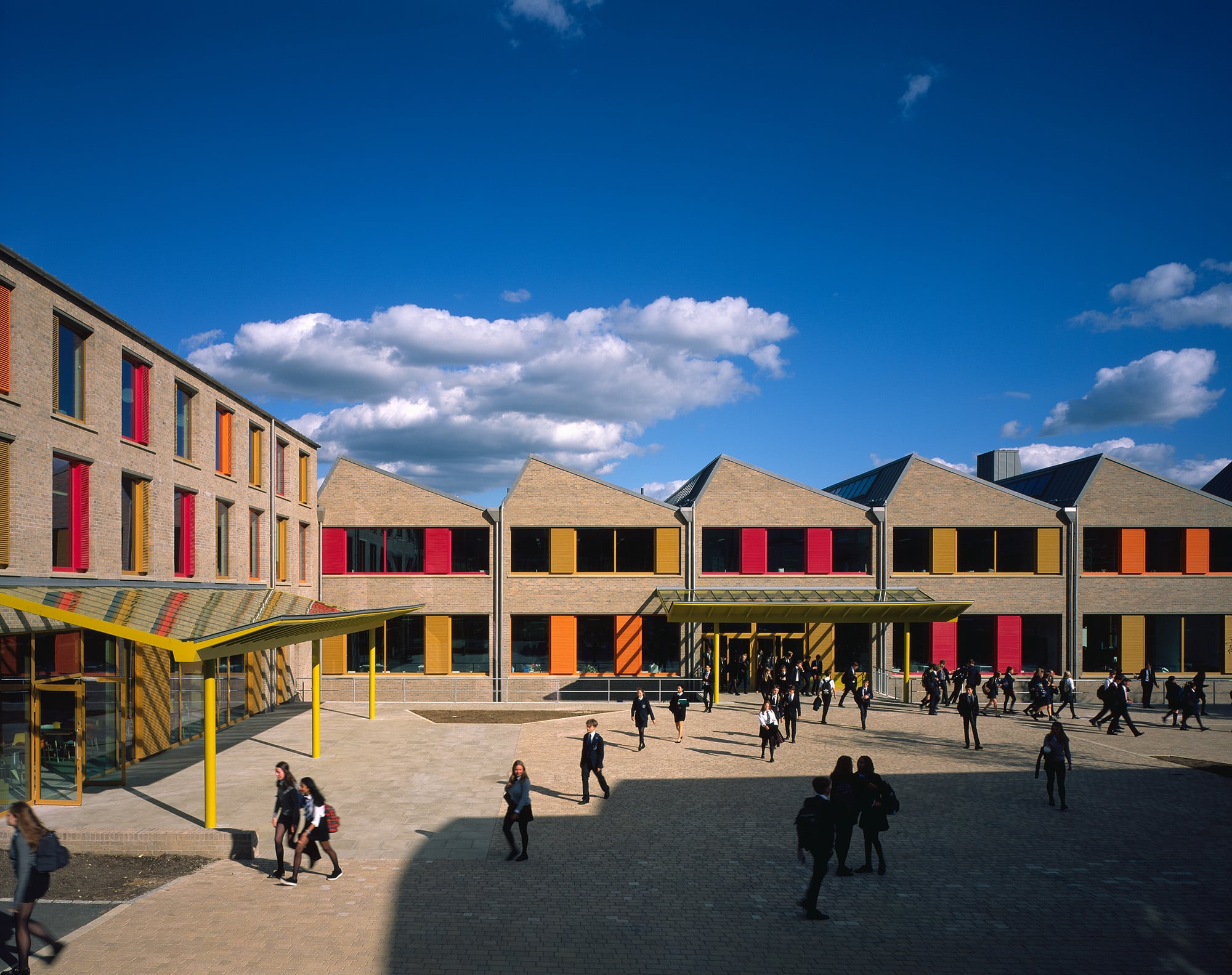The Built and Natural Environments of Sevenoaks School
In 1961, my father Paul Koralek, then a young graduate from London’s school of architecture, the AA, won, at the age of 27, an international competition to design the Berkeley Library at Trinity College Dublin. He was working in New York at the time, for the Bauhaus architect Marcel Breuer.
My dad remembers in a recent interview, ‘…I first came over to receive the prize…incidentally with a few-months-old baby, which I had overlooked to mention to the college…’ I don’t remember this at all, not surprisingly, as I was that baby.
Someone asked me at an architectural event a little while ago how I had managed to escape architecture. I replied that I hadn’t really. Though of course not an architect, some considerable – and very stimulating and exciting – portion of my role as Head of Sevenoaks involves working with architects.
I am sure the early influences growing up with an architect have played a part in developing a vision for our campus. A childhood that involved touring the Gothic cathedrals of France, and deserted monasteries in Ireland; hearing about sites and buildings from Jerusalem to Basildon, from Oxford to Offaly – these things were part of our family life.
So when I arrived here in 2002, to be greeted with the question, ‘Shall we put an extension on Claridge House to make room for the photocopier?’ something told me that this was not the right question. What followed was a tour of our site with my father as adviser. He showed us immediately the oddity of the Flat – a car park – at the heart of the school! By 2005, we had employed Tim Ronalds Architects to design a masterplan for the site – a blueprint for development that would consider our full educational needs and aspirations, and devise a sequenced plan to meet them.
So here we are in 2018, on the verge of completing what is in effect a new quadrangle for the school, made up of several of the elements central to the liberal education we offer – Physical Education and the Library at opposite ends, Technology and Science alongside and opposite the Performing and Visual Arts. At one end, a new concept – the Global Study Centre, designed to inspire the outward-facing ambition of our educational programme.
A quadrangle which might allow the artist to explore the chemistry of pigment, the physicist to find musical expression through vibration, the life scientist to explore biophysics, the industrial designer, or indeed, architect, to experiment with form and function. A quadrangle for recreation, conversation, contemplation. Spaces – indoor and outdoor – to encourage and nurture the values at our core: open-minded enquiry, curiosity, creativity, knowledge, understanding, and the perspective that can thrive in our diverse, global, multilingual community.
My father always says that great architecture is the product of collaboration between architect and client. That is certainly my experience here. Perhaps what has made us good clients is the fact that we share a clear vision of the experience we want for our students, and indeed all who teach or work at Sevenoaks School – one of free, imaginative and open debate, of the joy of discovery, of harmonious and purposeful interaction with friends and colleagues, of the shared pursuit of truth, the delight of our co-curriculum, the growth of inner resources for a balanced and fulfilling life. But we also recognise we might not know exactly what we want, and that we certainly don’t know how to translate these abstract desires and concepts into places and spaces.
What makes an architect great to work with is the ability to listen and observe, to see beyond the client’s articulation of the brief, and to elicit possibilities unthought of until that collaboration takes place. The ability to try out ideas, reject and change them, to be responsive and thoughtful to changing and evolving needs.
And the buildings themselves? Invested with light and form, generosity of proportion, quality of materials (the bricks handmade in the Forest of Dean, echoing the tone of Kentish ragstone), and quality of workmanship. Places enabling our students, teachers and staff to meet and intersect in inspiring spaces, to do things in new ways.
In The Buildings of England: West Kent and the Weald (1980) the architectural historians Nikolaus Pevsner and John Newman are sniffy about pretty much all of the school’s architecture: ‘Modern buildings, none of them noteworthy, behind’. Not what the next edition will truthfully be able to record.
Dr Katy Ricks
First published in Sennockian 2017-2018
